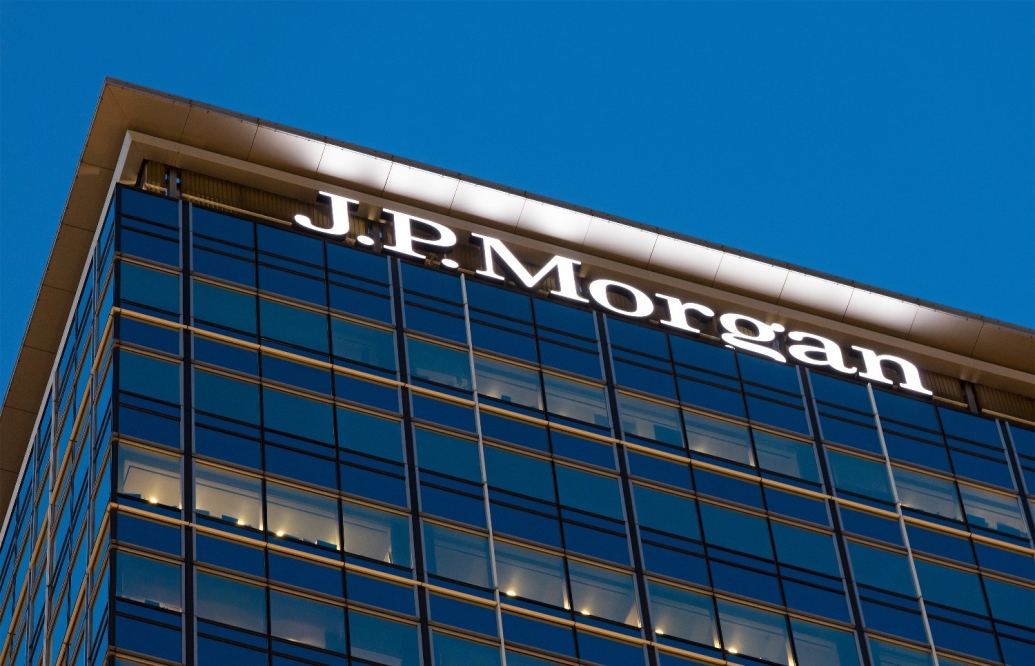JPMorgan Lays Groundwork for Tokenized Finance with New Blockchain Trademark
17.06.2025 12:00 1 min. read Alexander Stefanov
JPMorgan Chase has filed a new trademark application for "JPMD," signaling its intent to expand deeper into blockchain-based financial services.
While the filing doesn’t directly mention a stablecoin, it outlines a wide range of digital asset capabilities—including payments, trading, transfers, asset issuance, and debt settlement—built on distributed ledger technology.
This move builds on JPMorgan’s ongoing blockchain efforts, particularly through its Kinexys platform (formerly Onyx), which powers the JPM Coin.
That system, pegged to major fiat currencies, has already processed over $1.5 trillion in transactions and averages $2 billion daily.
The bank has also been active in asset tokenization through its Tokenized Collateral Network, which enables near-instant collateral transfers.
Despite CEO Jamie Dimon’s past criticism of crypto, JPMorgan remains one of the most active banks in blockchain innovation.
The filing comes amid renewed interest in stablecoins from major institutions like Bank of America and tech giants such as Amazon and Walmart, as U.S. regulators gradually warm up to the sector.
-
1
Chainlink Partners With Westpac and Imperium to Tokenize Finance in Australia
17.07.2025 21:00 1 min. read -
2
Solana Plans 66% Block Upgrade to Boost Network Capacity
24.07.2025 20:40 2 min. read -
3
Vietnam Launches National Blockchain to Digitize Government and Citizen Services
25.07.2025 16:36 2 min. read -
4
Wall Street Moves Onchain: Tokenized Finance Enters its Breakout Era
25.07.2025 18:32 2 min. read -
5
Top 10 AI and Big Data Crypto Projects by Development Activity
01.07.2025 19:00 2 min. read
Visa Settles $200M in Stablecoin Transactions, Eyes Long-term Potential
Visa reported over $200 million in stablecoin settlements during Q2 2025, a milestone in its growing commitment to digital asset infrastructure.
Bank of Korea Launches New Division to Oversee Crypto and Stablecoin Developments
The Bank of Korea (BOK) has taken a significant step toward deepening its involvement in the digital asset ecosystem by establishing a dedicated virtual asset division, according to a report from local media outlet News1.
JPMorgan: Coinbase Could Gain $60B From USDC-Circle Ecosystem
A new report from JPMorgan is shedding light on the staggering upside potential of Coinbase’s partnership with Circle and its deep exposure to the USDC stablecoin.
5 Major US Events and How They Can Shape Crypto Market in The Next Days
The week ahead is shaping up to be one of the most pivotal for global markets in months. With five major U.S. economic events scheduled between July 30 and August 1, volatility is almost guaranteed—and the crypto market is bracing for impact.
-
1
Chainlink Partners With Westpac and Imperium to Tokenize Finance in Australia
17.07.2025 21:00 1 min. read -
2
Solana Plans 66% Block Upgrade to Boost Network Capacity
24.07.2025 20:40 2 min. read -
3
Vietnam Launches National Blockchain to Digitize Government and Citizen Services
25.07.2025 16:36 2 min. read -
4
Wall Street Moves Onchain: Tokenized Finance Enters its Breakout Era
25.07.2025 18:32 2 min. read -
5
Top 10 AI and Big Data Crypto Projects by Development Activity
01.07.2025 19:00 2 min. read


